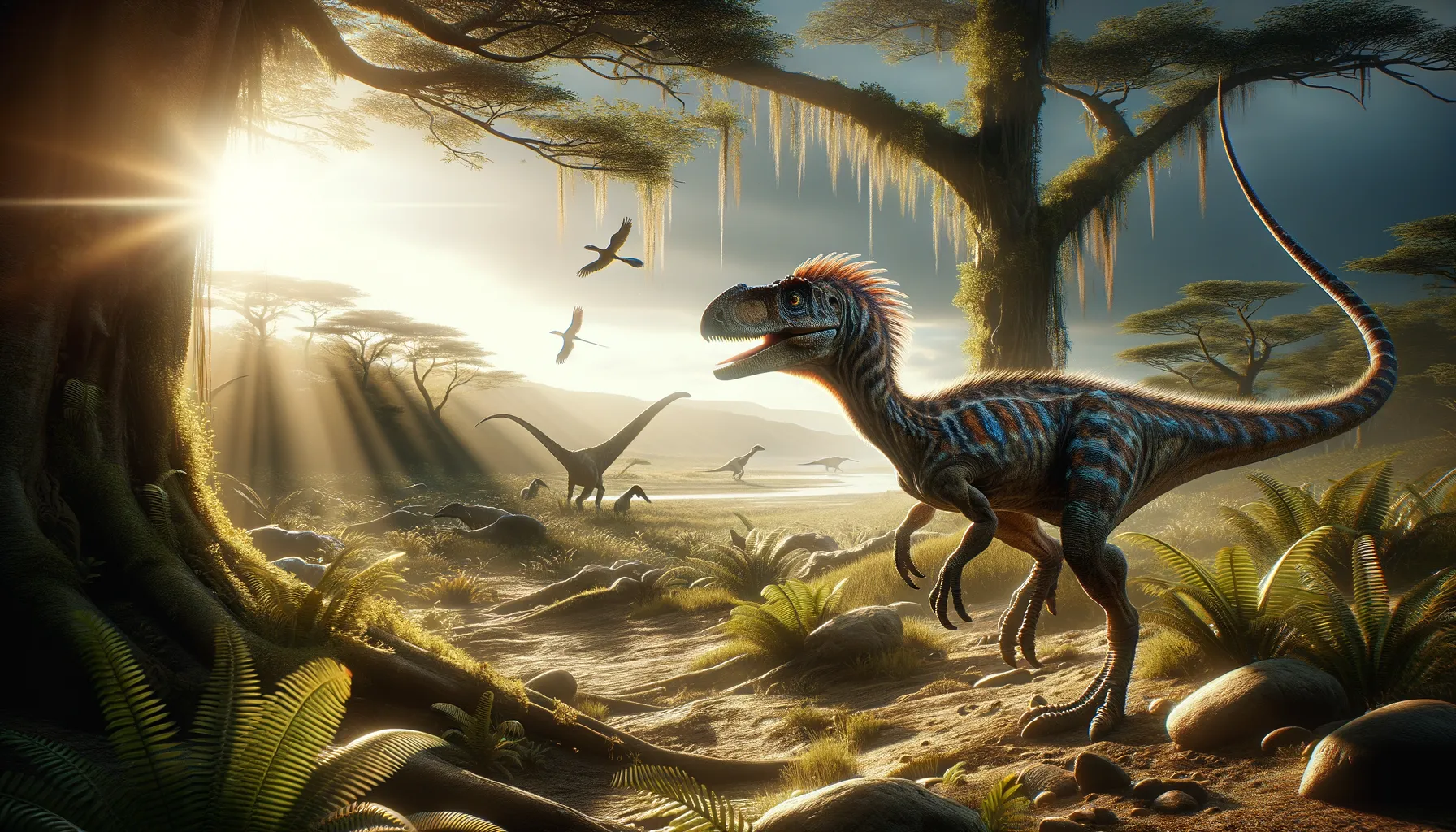
Achillesaurus
Swift predator of the Cretaceous age.
Period
Cretaceous
Length
Roughly 2 meters in length.
Height
Approximately 1.5 meters tall.
Weight
Around 30 kilograms.
Achillesaurus was a small, bipedal dinosaur that roamed the earth during the Late Cretaceous period. With features resembling modern birds, it is believed to have been swift and nimble in its movements. Known from fossils primarily found in Argentina, this dinosaur is an example of the rich diversity and adaptability of ancient theropods. Its relatively small size and lightweight structure suggest a lifestyle that favored speed and agility over brute strength.
Diet
Achillesaurus was a carnivorous dinosaur, primarily feeding on small animals. Its diet likely consisted of insects, small vertebrates, and perhaps carrion.
Hunting
Achillesaurus may have been a solitary hunter, using its speed and agility to chase down prey. It might have relied on stealth and quick bursts of speed to catch unsuspecting animals.
Environmental challenges
Living in the Late Cretaceous meant facing a rapidly changing climate. Achillesaurus had to adapt to fluctuations in temperature and possibly varying water levels during its lifetime. Predators and competition for food sources would have also posed significant challenges, requiring it to be constantly aware and adaptive to survive.
Speed
Fairly swift, likely agile on two legs.
Lifespan
Estimated around 15 to 20 years.
First discovery
Found in 1991 in Argentina's Patagonian region.
Fun Facts
- Achillesaurus was a small dinosaur that lived approximately 95 million years ago during the Late Cretaceous period.
- It was discovered in Argentina, making it one of the many fascinating dinosaurs found in South America.
- The name 'Achillesaurus' is inspired by the Greek hero Achilles, mainly because of its heel bone structure that resembles the Achilles tendon.
- This dinosaur is often categorized as a theropod, which is a group that includes the famous Tyrannosaurus rex and modern birds.
- Achillesaurus was likely a carnivore, possibly preying on small animals or insects.
- Despite its fierce name, Achillesaurus was about the size of a turkey, making it small compared to other predators of its time.
- Fossils of Achillesaurus have helped scientists understand more about the evolution of the Alvarezsauridae family, to which it belongs.
Growth and Development
Achillesaurus likely grew quickly in its early years to reach maturity and avoid predation. Its development might have involved phases of rapid growth during favorable conditions and slower growth in harsher times. Such growth patterns would have been essential for its survival in a dynamic environment.
Habitat
Achillesaurus inhabited what is now known as Argentina's Patagonia, a region that was likely a rich mix of forests and plains. These areas provided ample opportunities for hunting and evading predators. The diverse ecosystem supported a variety of life forms, offering various niches for survival.
Interaction with other species
Achillesaurus might have interacted with a variety of other species, from fellow theropods to prey species and potential predators. Its interactions could have included both cooperative and competitive relationships, perhaps forming loose alliances or competing for territory and resources.
Natural lifespan
Achillesaurus likely had a natural lifespan of about 15 to 20 years.
Reproduction
Achillesaurus likely laid eggs like most theropods, with nesting behaviors possibly akin to modern birds. Research suggests the possibility of parental care, where adults might have protected and fed the young until they could fend for themselves.
Social behaviour
Achillesaurus may have been a solitary creature, preferring to hunt and live independently. However, it might have formed loose groups during certain periods for mating or migration. Its social behaviors would have been influenced by environmental pressures and availability of resources.
Fossil locations
Achillesaurus fossils have been primarily discovered in the Neuquén Basin of Argentina. This region is known for its extensive Late Cretaceous deposits, which have revealed many important theropod species. Continued exploration in this area may uncover further insights into its ecology and lifestyle.
